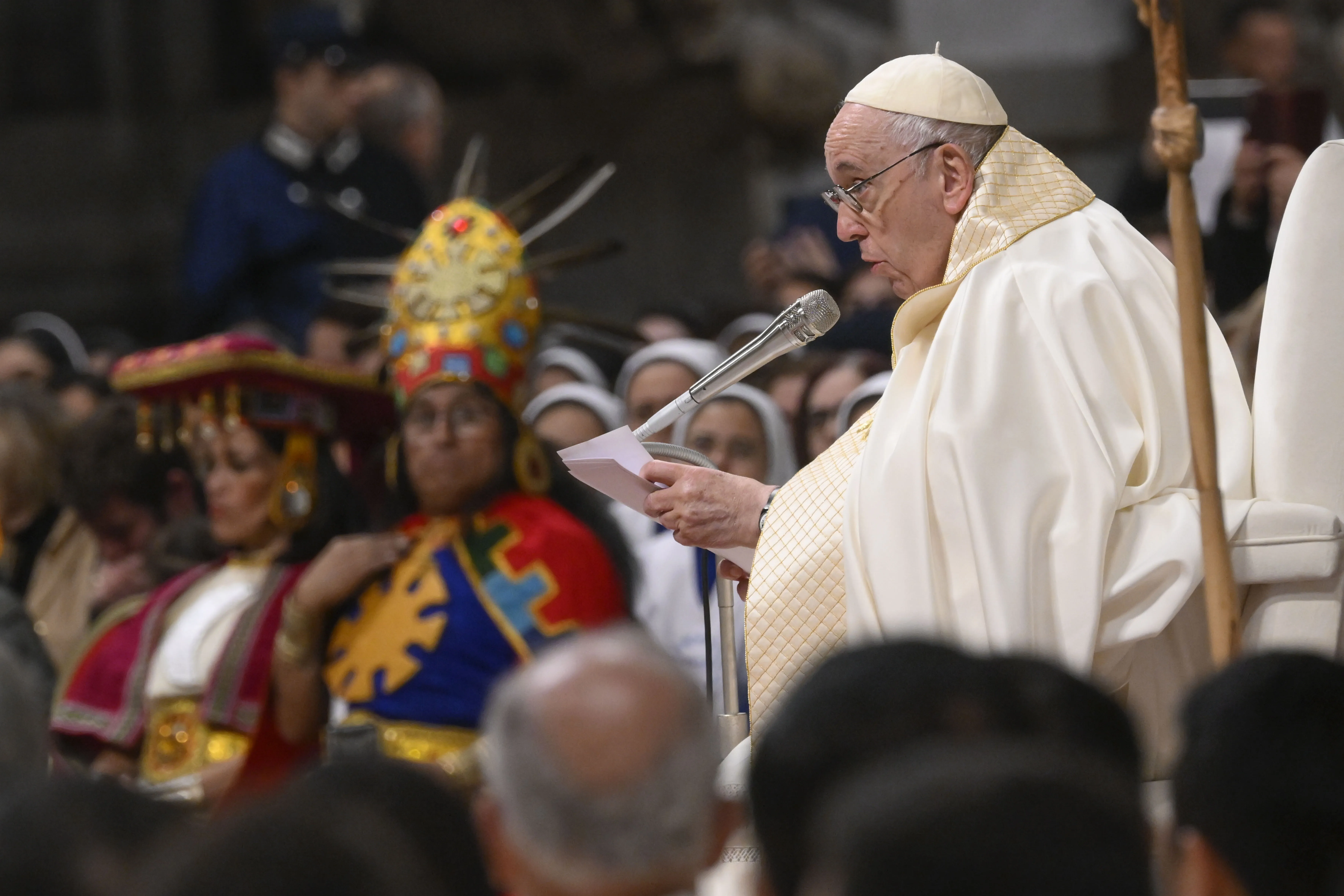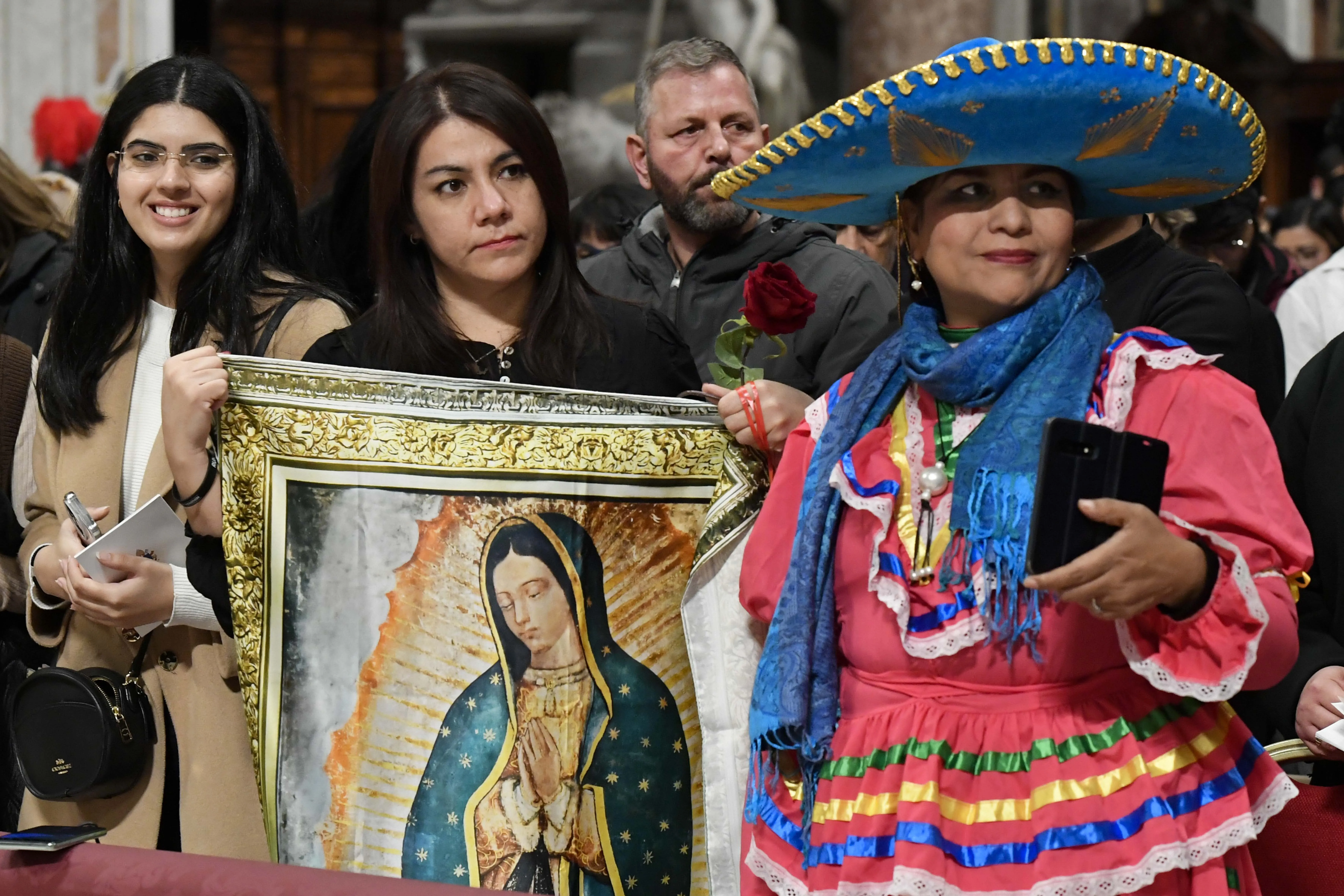Pope Francis: Our Lady of Guadalupe ‘Wants to Stay With Us’
The Virgin of Guadalupe appeared to St. Juan Diego on the Hill of Tepeyac in Mexico City in 1531, during a time of conflict between the Spanish and the indigenous peoples.

VATICAN CITY — Pope Francis celebrated Mass in Spanish in St. Peter’s Basilica Dec. 12 to mark the feast of Our Lady of Guadalupe, patroness of the Americas and the unborn.
In his homily, the Pope explained that just as the Virgin Mary was present to the indigenous people of Mexico nearly 500 years ago, she is with us today.
“Today as yesterday, Our Lady of Guadalupe wants to meet us too as she did one day with Juan Diego on the hill of Tepeyac,” Francis said. “She wants to stay with us. She begs us to allow her to be our mother, to open our lives to her Son Jesus and to welcome his message so as to learn to love like him.”
The Virgin of Guadalupe appeared to St. Juan Diego on the Hill of Tepeyac in Mexico City in 1531, during a time of conflict between the Spanish and the indigenous peoples.
Pope Francis said the Virgin Mary “came to accompany the American people on this hard road of poverty, exploitation, socio-economic and cultural colonialism.”
“She is in the midst of the caravans that are walking northward in search of freedom. She is in the midst of the American people whose identity is threatened by a savage and exploitative paganism, wounded by the active preaching of a practical and pragmatic atheism. And she is there. ‘I am your Mother,’ she tells us,” he said.
When she appeared to Juan Diego, Mary took the appearance of a pregnant native woman, wore clothing in the style of the indigenous community, and spoke in a native language, Nahuatl.
“Thus,” Pope Francis said, “Our Lady of Guadalupe came to the blessed lands of America, presenting herself as the ‘Mother of the true God for whom we live’; and she came to console, to attend to the needs of the little ones, without excluding anyone, to embrace them as a caring mother with her presence, love, and consolation.”
“She is our mother of mixed race,” he added.
Our Lady asked Juan Diego to appeal to the bishop to build a church on the site of the apparition, stating she wanted a place where she could reveal to the people the compassion of her son. Initially turned away by the bishop, Diego returned to the site asking Our Lady for a sign to prove the authenticity of her message.
She instructed him to gather the Castilian roses that he found blooming on the hillside, despite the fact that it was winter, and present them to the Spanish bishop. Juan Diego filled his cloak — known as a tilma — with the flowers. When he presented them to the bishop, he found that an image of Our Lady was miraculously imprinted upon his tilma.
Nearly 500 years later, Diego’s tilma with the miraculous image is preserved in the Basilica of Our Lady of Guadalupe and visited by millions of pilgrims each year.
“Our God,” Pope Francis said, “guides human history at every moment; nothing remains outside his power, which is tenderness and providential love. He makes himself present through a deed, an action, an event, or a person. He never stops watching over our world — needy, wounded, anxious — to assist it with his compassion and mercy. His way of intervening, of manifesting himself, always surprises us and fills us with joy.”
- Keywords:
- our lady of guadalupe


















